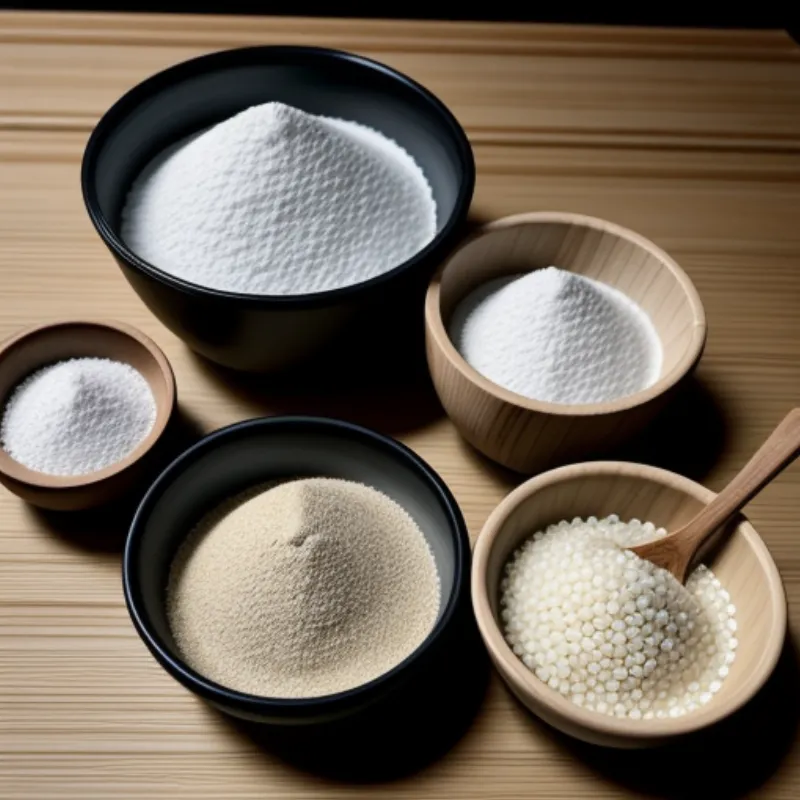Miso paste, the heart of countless Japanese dishes, is more than just a fermented soybean condiment. It’s a flavor powerhouse, a testament to time and tradition, and surprisingly easy to make in your own kitchen. In this comprehensive guide, we’ll unlock the secrets of miso making, guiding you from humble soybeans to a jar of umami gold.
Imagine the aroma of fermentation filling your home, a scent that speaks of ancient culinary traditions. That, my friends, is the allure of making your own miso. It’s a journey that connects us to generations past, allowing us to experience the magic of transforming simple ingredients into a culinary treasure.
Why Make Miso Paste at Home?
You might be thinking, “Why go through the effort when I can buy miso paste at the store?” And while store-bought options are convenient, homemade miso offers a world of flavor customization and a sense of accomplishment that’s deeply rewarding. Plus, you control the quality of ingredients, ensuring a pure and flavorful outcome.
Unveiling the Ingredients for Miso Paste
Before embarking on this flavorful adventure, let’s gather our ingredients, each playing a crucial role in developing the complex flavor profile of miso.
Essential Components
- Soybeans: The foundation of miso, choose high-quality, organic soybeans for the best flavor.
- Koji: This magical ingredient, made from inoculated rice or barley, is the fermentation starter that transforms soybeans into miso.
- Salt: Acts as a natural preservative, drawing out moisture and regulating the fermentation process.
Optional Flavor Enhancers
- Kombu (Kelp): Adds a subtle umami boost and depth of flavor.
- Dried Shiitake Mushrooms: Infuse the miso with a rich, earthy aroma.
Tools of the Trade
Making miso requires minimal equipment, most of which you likely already have in your kitchen.
- Large pot for steaming soybeans
- Colander or strainer
- Potato masher or food processor
- Sterilized jars for storage
A Step-by-Step Guide to Making Miso Paste
Now that we have our ingredients and tools prepped, let’s dive into the art of crafting homemade miso.
1. Preparing the Soybeans
- Rinse the soybeans thoroughly under cold water, discarding any debris or broken beans.
- Soak the soybeans in a large pot of cold water overnight or for at least 8 hours. Soaking softens the beans and prepares them for steaming.
2. Steaming the Soybeans
- Drain the soaked soybeans and transfer them to a steamer basket.
- Steam the soybeans for 3-4 hours, or until they’re completely tender and easily mashed between your fingers.
3. Making the Miso Mash
- While the soybeans are still warm, mash them thoroughly using a potato masher or food processor.
- If using, finely chop the kombu and dried shiitake mushrooms and add them to the mashed soybeans.
4. Incorporating the Koji
- In a separate bowl, combine the koji and salt.
- Gradually add the koji-salt mixture to the mashed soybeans, mixing thoroughly until a homogenous paste forms.
5. Packing and Fermenting
- Sterilize your jars by boiling them in water for 10 minutes.
- Pack the miso paste tightly into the sterilized jars, leaving about an inch of headspace at the top.
- Cover the surface of the miso with a sheet of parchment paper, pressing it down firmly to create an airtight seal.
- Seal the jars tightly and store them in a cool, dark place for at least 6 months to a year.
 Miso Paste Ingredients
Miso Paste Ingredients
FAQs About Making Miso Paste
Q: Can I use a different type of bean?
A: While soybeans are traditional, you can experiment with other beans like chickpeas or adzuki beans for unique flavor profiles. Keep in mind that the fermentation time might vary.
Q: How do I know if my miso is ready?
A: Miso is alive! As it ages, it will darken in color and develop a more complex, pungent aroma. A small taste test can reveal its readiness—look for a deep umami flavor with a balanced saltiness.
Q: What can I do if mold forms on the surface of my miso?
A: Don’t panic! A thin layer of white mold is normal and a good sign of healthy fermentation. Simply scrape it off before using your miso. However, if you notice any colorful or fuzzy mold, it’s best to discard the batch.
Tips and Tricks from a Culinary Expert
“When making miso, patience is your greatest ally,” shares Chef Akira Ito, a renowned Japanese culinary expert. “Don’t rush the fermentation process. The longer you wait, the richer and more nuanced your miso will become.” Chef Ito also recommends experimenting with different types of koji for unique flavor variations.
Serving Suggestions: A World of Flavor Awaits
The beauty of miso paste lies in its versatility. It adds a burst of umami to soups, stews, marinades, dressings, and even desserts.
Here are a few ideas to get you started:
- Stir a spoonful into your next bowl of ramen for an extra layer of depth.
- Whisk it with olive oil, rice vinegar, and ginger for a simple yet flavorful salad dressing.
- Use it to marinate tofu or tempeh before grilling or baking.
 Jars of Miso Paste Fermenting
Jars of Miso Paste Fermenting
Embark on Your Miso-Making Journey
Making miso paste at home is an act of culinary creativity and a celebration of slow food traditions. While it requires patience, the rewards are immeasurable. So, gather your ingredients, embrace the process, and savor the journey of transforming humble soybeans into a jar of pure umami gold.
Ready to explore other homemade sauce adventures? Discover the vibrant flavors of our Kimchi Buchimgae Sauce recipe [link to: https://familycuisine.net/how-to-make-kimchi-buchimgae-sauce/]. You’ll be amazed at the world of taste that awaits!
